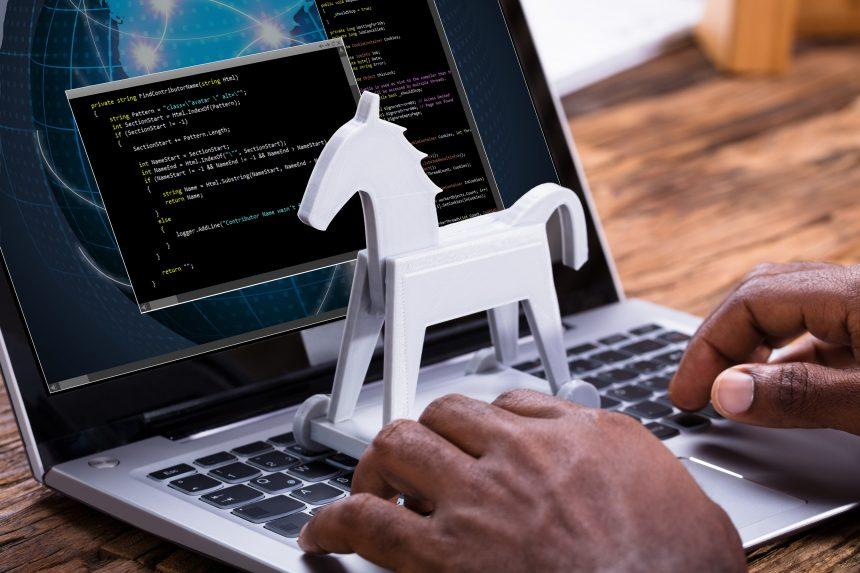Trojan horse malware is a form of malicious software designed to deceive users into thinking it is a legitimate application or file. The term “Trojan” comes from the famous story of the Trojan War, where the Greeks used a deceptive wooden horse to infiltrate the city of Troy. Similarly, Trojan malware often disguises itself as a harmless file, tricking users into downloading or executing it. Once inside the system, Trojans can cause a range of harmful actions, such as stealing sensitive information, corrupting files, or opening backdoors for other malicious programs. These types of malware are particularly dangerous because they don’t replicate themselves like viruses but rely on user actions to spread and infiltrate other systems.
Download SpyHunter Now & Scan Your Computer For Free!
Remove this and any other malicious threats to your system by scanning your computer with SpyHunter now! It’s FREE!
Trojan:Win32/KryptInject.PZ – The Threat Unveiled
Trojan:Win32/KryptInject.PZ is a particularly harmful variant of Trojan malware targeting Windows operating systems. Once it infects a system, it usually gets installed through malicious email attachments, suspicious downloads, or compromised websites. Once executed, KryptInject.PZ establishes a hidden presence on the infected machine and can perform several malicious activities.
The primary function of Trojan:Win32/KryptInject.PZ is to inject malicious code into the system, often targeting web browsers or other critical system processes. This injection allows the Trojan to steal sensitive user information, such as login credentials and banking details, which it may then send back to a remote server controlled by cybercriminals. KryptInject.PZ can also modify system settings, disable security software, and make the computer more vulnerable to further attacks. The Trojan may also download additional malicious payloads, escalating the damage it causes.
Symptoms of Infection
Users may not immediately notice the presence of Trojan:Win32/KryptInject.PZ, but there are a few common symptoms that can indicate an infection. These include:
- Slow system performance or frequent crashes
- Unexplained changes in system settings or homepage
- Unauthorized access to online accounts
- Frequent pop-up ads or redirects to suspicious websites
- Antivirus software or firewall being disabled or malfunctioning
Detection Names
To help identify Trojan:Win32/KryptInject.PZ, users can look for the following detection names:
- Trojan:Win32/KryptInject.PZ
- PUA.KryptInject
- KryptInject.PZ (Symantec)
- Trojan.Malicious
Similar Threats
Several other Trojan variants share similar characteristics with KryptInject.PZ, including:
- Trojan:Win32/Zbot: A well-known Trojan often used for financial theft.
- Trojan:Win32/Emotet: This malware is often spread via phishing emails and can cause significant damage by stealing personal information.
- Trojan:Win32/TrickBot: Another Trojan that is frequently used to steal banking information.
Comprehensive Removal Guide
If you suspect your system has been infected with Trojan:Win32/KryptInject.PZ, it’s crucial to act quickly to minimize damage. Here’s a step-by-step guide to removing this malware:
- Disconnect from the Internet: To prevent the Trojan from sending your data to remote servers, disconnect your computer from the internet.
- Enter Safe Mode: Reboot your computer in Safe Mode to limit the Trojan’s activity. To do this, restart your computer, and before it boots, press the F8 key (or Shift + F8 for some systems) to access the Advanced Boot Options, then select “Safe Mode with Networking.”
- Run a Full Antivirus Scan: Use SpyHunter to scan the system. Make sure your virus definitions are up to date. If your antivirus does not detect KryptInject.PZ, consider using a specialized malware removal tool like SpyHunter.
- Manually Remove Malicious Files: If the Trojan is not fully removed by your antivirus, you may need to manually delete suspicious files. Check your Task Manager (Ctrl + Shift + Esc) for any unfamiliar or suspicious processes, and terminate them. Then, navigate to the following locations to delete files associated with the Trojan:
- C:\Users[Your Username]\AppData\Local
- C:\ProgramData
- C:\Windows\Temp
- Check Your Browser: Trojans often target web browsers to hijack your search engine or homepage settings. Check your browser settings and reset them to default if necessary. Remove any suspicious extensions or add-ons.
- Restore Your System: If the Trojan persists after the above steps, consider restoring your system to an earlier point before the infection occurred. This can be done through the System Restore feature in Windows.
- Update Your Security Software: After removing the Trojan, update your antivirus software and ensure your firewall is enabled to prevent future infections.
Preventing Future Infections
To prevent Trojan:Win32/KryptInject.PZ and other similar malware from infecting your system, follow these best practices:
- Be cautious when downloading files or email attachments. Only download software from trusted sources.
- Enable a reliable antivirus program. Keep it updated to detect new threats.
- Use a firewall to protect your network from incoming threats.
- Avoid clicking on suspicious links or visiting untrusted websites.
- Educate yourself about phishing and how to recognize fraudulent emails and websites.
SpyHunter: Your First Line of Defense
To safeguard your computer from threats like Trojan:Win32/KryptInject.PZ, it is highly recommended to download and use SpyHunter. This advanced anti-malware tool can scan your system for free and help remove Trojans and other harmful software. It offers real-time protection against emerging threats and ensures your system remains safe from cybercriminals.
If you are still having trouble, consider contacting remote technical support options.





